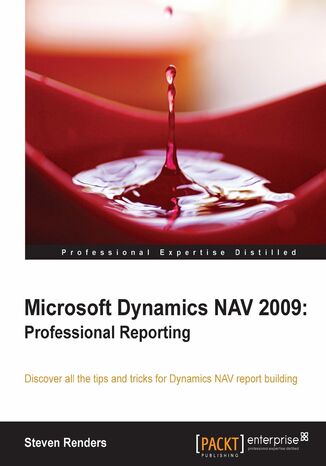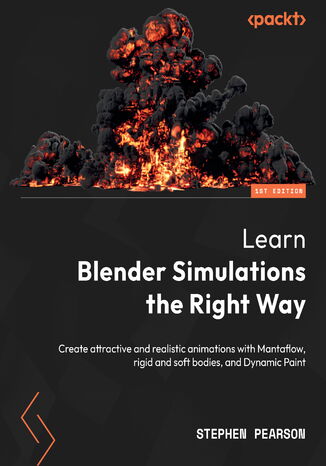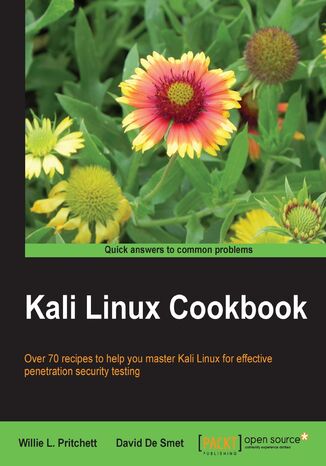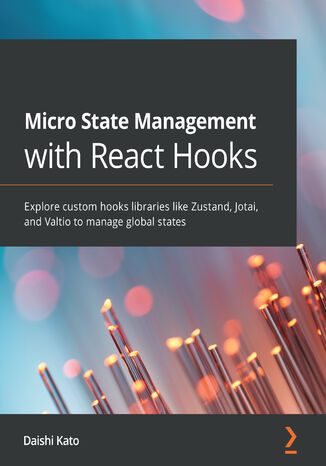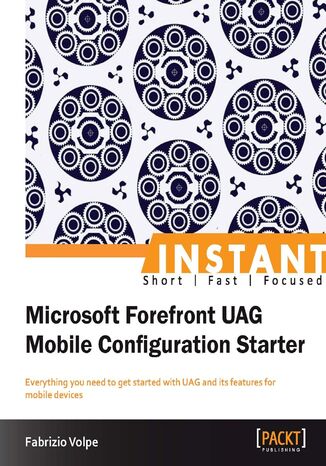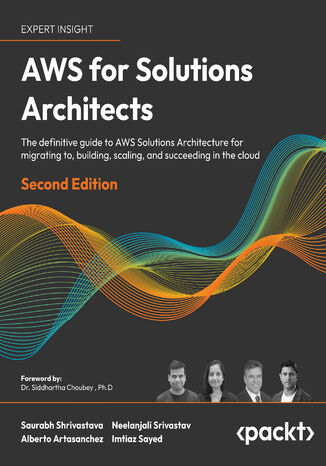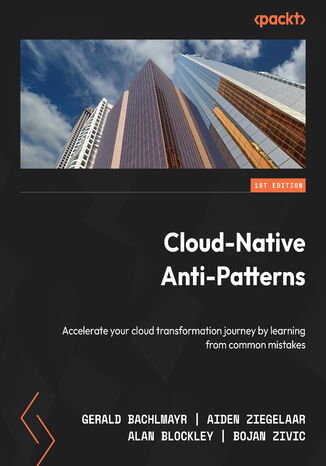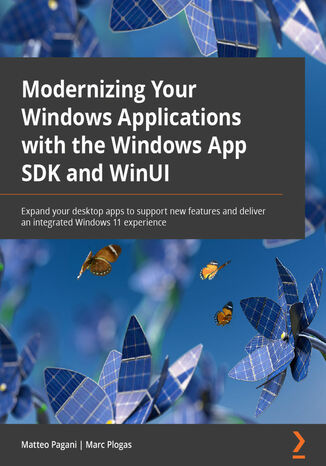Kategorien
E-Books
-
Wirtschaft
- Bitcoin
- Geschäftsfrau
- Coaching
- Controlling
- E-Business
- Ökonomie
- Finanzen
- Börse und Investitionen
- Persönliche Kompetenzen
- Computer im Büro
- Kommunikation und Verhandlungen
- Kleines Unternehmen
- Marketing
- Motivation
- Multimedia-Training
- Immobilien
- Überzeugung und NLP
- Steuern
- Sozialpolitik
- Handbȕcher
- Präsentationen
- Führung
- Public Relation
- Berichte, Analysen
- Geheimnis
- Social Media
- Verkauf
- Start-up
- Ihre Karriere
- Management
- Projektmanagement
- Personal (HR)
-
Für Kinder
-
Für Jugendliche
-
Bildung
-
Enzyklopädien, Wörterbücher
-
E-Presse
- Architektura i wnętrza
- Sicherheit und Gesundheit am Arbeitsplatz
- Biznes i Ekonomia
- Haus und Garten
- E-Business
- Ekonomia i finanse
- Esoterik
- Finanzen
- Persönliche Finanzen
- Unternehmen
- Fotografie
- Informatik
- HR und Gehaltsabrechnung
- Frauen
- Computer, Excel
- Buchhaltung
- Kultur und Literatur
- Wissenschaftlich und akademisch
- Umweltschutz
- meinungsbildend
- Bildung
- Steuern
- Reisen
- Psychologie
- Religion
- Landwirtschaft
- Buch- und Pressemarkt
- Transport und Spedition
- Gesundheit und Schönheit
-
Geschichte
-
Informatik
- Office-Programme
- Datenbank
- Bioinformatik
- IT Branche
- CAD/CAM
- Digital Lifestyle
- DTP
- Elektronik
- Digitale Fotografie
- Computergrafik
- Spiele
- Hacking
- Hardware
- IT w ekonomii
- Wissenschaftliche Pakete
- Schulbücher
- Computergrundlagen
- Programmierung
- Mobile-Programmierung
- Internet-Server
- Computernetzwerke
- Start-up
- Betriebssysteme
- Künstliche Inteligenz
- Technik für Kinder
- Webmaster
-
Andere
-
Fremdsprachen lernen
-
Kultur und Kunst
-
Lektüre
-
Literatur
- Anthologien
- Ballade
- Biografien und Autobiografien
- Für Erwachsene
- Drama
- Tagebücher, Memoiren, Briefe
- Epos
- Essay
- Science Fiction
- Felietonys
- Fiktion
- Humor, Satire
- Andere
- Klassisch
- Krimi
- Sachbücher
- Belletristik
- Mity i legendy
- Nobelpreisträger
- Kurzgeschichten
- Gesellschaftlich
- Okultyzm i magia
- Erzählung
- Erinnerungen
- Reisen
- Gedicht
- Poesie
- Politik
- Populärwissenschaftlich
- Roman
- Historischer Roman
- Prosa
- Abenteuer
- Journalismus
- Reportage
- Romans i literatura obyczajowa
- Sensation
- Thriller, Horror
- Interviews und Erinnerungen
-
Naturwissenschaften
-
Sozialwissenschaften
-
Schulbücher
-
Populärwissenschaft und akademisch
- Archäologie
- Bibliotekoznawstwo
- Filmwissenschaft
- Philologie
- Polnische Philologie
- Philosophie
- Finanse i bankowość
- Erdkunde
- Wirtschaft
- Handel. Weltwirtschaft
- Geschichte und Archäologie
- Kunst- und Architekturgeschichte
- Kulturwissenschaft
- Linguistik
- Literaturwissenschaft
- Logistik
- Mathematik
- Medizin
- Geisteswissenschaften
- Pädagogik
- Lehrmittel
- Populärwissenschaftlich
- Andere
- Psychologie
- Soziologie
- Theatrologie
- Teologie
- Theorien und Wirtschaftswissenschaften
- Transport i spedycja
- Sportunterricht
- Zarządzanie i marketing
-
Handbȕcher
-
Spielanleitungen
-
Professioneller und fachkundige Leitfaden
-
Jura
- Sicherheit und Gesundheit am Arbeitsplatz
- Geschichte
- Verkehrsregeln. Führerschein
- Rechtswissenschaften
- Gesundheitswesen
- Allgemeines. Wissenskompendium
- akademische Bücher
- Andere
- Bau- und Wohnungsrecht
- Zivilrecht
- Finanzrecht
- Wirtschaftsrecht
- Wirtschafts- und Handelsrecht
- Strafrecht
- Strafrecht. Kriminelle Taten. Kriminologie
- Internationales Recht
- Internationales und ausländisches Recht
- Gesundheitsschutzgesetz
- Bildungsrecht
- Steuerrecht
- Arbeits- und Sozialversicherungsrecht
- Öffentliches, Verfassungs- und Verwaltungsrecht
- Familien- und Vormundschaftsrecht
- Agrarrecht
- Sozialrecht, Arbeitsrecht
- EU-Recht
- Industrie
- Agrar- und Umweltschutz
- Wörterbücher und Enzyklopädien
- Öffentliche Auftragsvergabe
- Management
-
Führer und Reisen
- Afrika
- Alben
- Südamerika
- Mittel- und Nordamerika
- Australien, Neuseeland, Ozeanien
- Österreich
- Asien
- Balkan
- Naher Osten
- Bulgarien
- China
- Kroatien
- Tschechische Republik
- Dänemark
- Ägypten
- Estland
- Europa
- Frankreich
- Berge
- Griechenland
- Spanien
- Niederlande
- Island
- Litauen
- Lettland
- Mapy, Plany miast, Atlasy
- Miniführer
- Deutschland
- Norwegen
- Aktive Reisen
- Polen
- Portugal
- Andere
- Przewodniki po hotelach i restauracjach
- Russland
- Rumänien
- Slowakei
- Slowenien
- Schweiz
- Schweden
- Welt
- Türkei
- Ukraine
- Ungarn
- Großbritannien
- Italien
-
Psychologie
- Lebensphilosophien
- Kompetencje psychospołeczne
- zwischenmenschliche Kommunikation
- Mindfulness
- Allgemeines
- Überzeugung und NLP
- Akademische Psychologie
- Psychologie von Seele und Geist
- Arbeitspsychologie
- Relacje i związki
- Elternschafts- und Kinderpsychologie
- Problemlösung
- Intellektuelle Entwicklung
- Geheimnis
- Sexualität
- Verführung
- Aussehen ind Image
- Lebensphilosophien
-
Religion
-
Sport, Fitness, Diäten
-
Technik und Mechanik
Hörbücher
-
Wirtschaft
- Bitcoin
- Geschäftsfrau
- Coaching
- Controlling
- E-Business
- Ökonomie
- Finanzen
- Börse und Investitionen
- Persönliche Kompetenzen
- Kommunikation und Verhandlungen
- Kleines Unternehmen
- Marketing
- Motivation
- Immobilien
- Überzeugung und NLP
- Steuern
- Sozialpolitik
- Handbȕcher
- Präsentationen
- Führung
- Public Relation
- Geheimnis
- Social Media
- Verkauf
- Start-up
- Ihre Karriere
- Management
- Projektmanagement
- Personal (HR)
-
Für Kinder
-
Für Jugendliche
-
Bildung
-
Enzyklopädien, Wörterbücher
-
E-Presse
-
Geschichte
-
Informatik
-
Andere
-
Fremdsprachen lernen
-
Kultur und Kunst
-
Lektüre
-
Literatur
- Anthologien
- Ballade
- Biografien und Autobiografien
- Für Erwachsene
- Drama
- Tagebücher, Memoiren, Briefe
- Epos
- Essay
- Science Fiction
- Felietonys
- Fiktion
- Humor, Satire
- Andere
- Klassisch
- Krimi
- Sachbücher
- Belletristik
- Mity i legendy
- Nobelpreisträger
- Kurzgeschichten
- Gesellschaftlich
- Okultyzm i magia
- Erzählung
- Erinnerungen
- Reisen
- Poesie
- Politik
- Populärwissenschaftlich
- Roman
- Historischer Roman
- Prosa
- Abenteuer
- Journalismus
- Reportage
- Romans i literatura obyczajowa
- Sensation
- Thriller, Horror
- Interviews und Erinnerungen
-
Naturwissenschaften
-
Sozialwissenschaften
-
Populärwissenschaft und akademisch
- Archäologie
- Philosophie
- Wirtschaft
- Handel. Weltwirtschaft
- Geschichte und Archäologie
- Kunst- und Architekturgeschichte
- Kulturwissenschaft
- Literaturwissenschaft
- Mathematik
- Medizin
- Geisteswissenschaften
- Pädagogik
- Lehrmittel
- Populärwissenschaftlich
- Andere
- Psychologie
- Soziologie
- Teologie
- Zarządzanie i marketing
-
Handbȕcher
-
Professioneller und fachkundige Leitfaden
-
Jura
-
Führer und Reisen
-
Psychologie
- Lebensphilosophien
- zwischenmenschliche Kommunikation
- Mindfulness
- Allgemeines
- Überzeugung und NLP
- Akademische Psychologie
- Psychologie von Seele und Geist
- Arbeitspsychologie
- Relacje i związki
- Elternschafts- und Kinderpsychologie
- Problemlösung
- Intellektuelle Entwicklung
- Geheimnis
- Sexualität
- Verführung
- Aussehen ind Image
- Lebensphilosophien
-
Religion
-
Sport, Fitness, Diäten
-
Technik und Mechanik
Videokurse
-
Datenbank
-
Big Data
-
Biznes, ekonomia i marketing
-
Cybersicherheit
-
Data Science
-
DevOps
-
Für Kinder
-
Elektronik
-
Grafik / Video / CAX
-
Spiele
-
Microsoft Office
-
Entwicklungstools
-
Programmierung
-
Persönliche Entwicklung
-
Computernetzwerke
-
Betriebssysteme
-
Softwaretest
-
Mobile Geräte
-
UX/UI
-
Web development
-
Management
Podcasts
Steven Renders, Steven Renders
Microsoft Dynamics NAV is widely used in enterprises with its enhanced reporting features, but there still isn’t a book that covers reporting in depth, until now. This book will show you what’s possible and exactly how to develop reports for Dynamics NAV 2009. Learn why reports are designed in a specific way and then apply this knowledge to your advantage. Microsoft Dynamics NAV 2009: Professional Reporting is an essential guide to understanding the effort involved in creating reports in Dynamics NAV 2009, and all of the available reporting possibilities. Reading this book will result in a better understanding and it will help you save time during development.The book starts with an overview of what kind of reports you can create without a developer using charts, dimensions, and analysis views. The next chapter will introduce the new architecture of Role Tailored Client (RTC) reports and the basics on how to create them or have them generated. Moving on we will discuss data visualization, where you will learn how and when to implement all the available Visual Studio controls. Document reports and other types of specific reports are covered next, and you will get to know all the best workarounds for getting them to work correctly.Knowing other related features is vitally important to obtain a helicopter view of all the reporting possibilities of Dynamics NAV, and the next chapter will introduce Business Intelligence concepts and available technologies that could be used in combination with the Dynamics NAV database. Technology is evolving rapidly and new versions of Dynamics NAV are in the pipeline, so the book will also provide you with a view to the future and how to prepare for it.
Blender is a free, open source 3D software that allows you to create stunning visual graphics, animation, VFX, and much more!This book is an in-depth guide to creating realistic and eye-catching simulations, understanding the various settings and options around their creation, and learning how to troubleshoot solutions to your own Blender problems. In addition, this book can also be used to simulate the behavior of certain physics effects, such as fire, fluid, soft bodies, and rigid bodies.You’ll learn how to use Mantaflow, an open source framework within Blender software, to create fire, smoke, and fluid simulations. As you progress, you’ll understand how to easily produce satisfying rigid and soft body simulations, along with cloth simulations. Finally, you’ll use Dynamic Paint, Blender’s modifier, and the physics system to create eye-catching animations.By the end of this Blender book, you’ll have created a number of animations on your own, such as a campfire, waterfalls, and explosions. You’ll also have gained a deeper understanding of all the simulation options in Blender, which you can use to create portfolio-ready animations.
In this age, where online information is at its most vulnerable, knowing how to execute the same attacks that hackers use to break into your system or network helps you plug the loopholes before it's too late and can save you countless hours and money. Kali Linux is a Linux distribution designed for penetration testing and security auditing. It is the successor to BackTrack, the world's most popular penetration testing distribution.Discover a variety of popular tools of penetration testing, such as information gathering, vulnerability identification, exploitation, privilege escalation, and covering your tracks.Packed with practical recipes, this useful guide begins by covering the installation of Kali Linux and setting up a virtual environment to perform your tests. You will then learn how to eavesdrop and intercept traffic on wireless networks, bypass intrusion detection systems, and attack web applications, as well as checking for open ports, performing data forensics, and much more. The book follows the logical approach of a penetration test from start to finish with many screenshots and illustrations that help to explain each tool in detail. The Kali Linux Cookbook will serve as an excellent source of information for the security professional and novice alike!
State management is one of the most complex concepts in React. Traditionally, developers have used monolithic state management solutions. Thanks to React Hooks, micro state management is something tuned for moving your application from a monolith to a microservice.This book provides a hands-on approach to the implementation of micro state management that will have you up and running and productive in no time. You’ll learn basic patterns for state management in React and understand how to overcome the challenges encountered when you need to make the state global. Later chapters will show you how slicing a state into pieces is the way to overcome limitations. Using hooks, you'll see how you can easily reuse logic and have several solutions for specific domains, such as form state and server cache state. Finally, you'll explore how to use libraries such as Zustand, Jotai, and Valtio to organize state and manage development efficiently.By the end of this React book, you'll have learned how to choose the right global state management solution for your app requirement.
UAG provides your employees, clients, or partners secure remote access to your vital corporate resources, while delivering a seamless integration with your existing network environment. UAG is able to optimize content for different mobile devices, and is also able to publish complex applications in a simple manner. You are also able to integrate UAG with multiple domains and federated authentications, to give the highest quality service in a mobility scenario. Instant Microsoft Forefront UAG Mobile Configuration Starter is a concise and informative book that allows you to set up and start using UAG without any existing knowledge of the area.This book will start by expertly guiding you through the installation and setup of UAG, and then show you how to publish a simple application for mobile devices, in order to familiarize you with concepts and operations that you will use throughout with UAG.The main body of the book focuses on a series of essential, and incredibly practical, recipes and examples designed to help you in utilizing UAG features for their maximum effect. By the end of Instant Microsoft Forefront UAG Mobile Configuration Starter, you will know all the vital information you need to deploy UAG in a successful and efficient manner, in order to tailor the configuration to your company’s specific requirements.
Saurabh Shrivastava, Neelanjali Srivastav, Alberto Artasanchez, Imtiaz Sayed, ...
The second edition of AWS for Solutions Architects provides a practical guide to designing cloud solutions that align with industry best practices. This updated edition covers the AWS Well-Architected Framework, core design principles, and cloud-native patterns to help you build secure, high-performance, and cost-effective architectures.Gain a deep understanding of AWS networking, hybrid cloud connectivity, and edge deployments. Explore big data processing with EMR, Glue, Kinesis, and MSK, enabling you to extract valuable insights from data efficiently. New chapters introduce CloudOps, machine learning, IoT, and blockchain, equipping you with the knowledge to develop modern cloud solutions.Learn how to optimize AWS storage, implement containerization strategies, and design scalable data lakes. Whether working on simple configurations or complex enterprise architectures, this guide provides the expertise needed to solve real-world cloud challenges and build reliable, high-performing AWS solutions.
Gerald Bachlmayr, Aiden Ziegelaar, Alan Blockley, Bojan Zivic, ...
Successfully transitioning to a cloud-native architecture demands more than just new tools—it requires a change in mindset. Written by cloud transformation experts Gerald Bachlmayr, Aiden Ziegelaar, Alan Blockley, and Bojan Zivic—this guide shows you how to identify and remediate cloud anti-patterns, manage FinOps, meet security goals, and understand cloud storage, thus steering your organization to become truly cloud native. You will develop the skills necessary to navigate the cloud native landscape, irrespective of the platform: AWS. Azure or GCP!You’ll start by exploring the events that shaped our understanding of the modern cloud-native stack. Through practical examples, you’ll learn how to implement a suitable governance model, adopt FinOps and DevSecOps best practices, and create an effective cloud native roadmap. You will identify common anti-patterns and refactor them into best practices.The book examines potential pitfalls and suggests solutions that enhance business agility. You’ll also gain expert insights into observability, migrations, and testing of cloud native solutions.
If you're a developer looking to improve and modernize your existing LOB applications to leverage modern Windows features without having to rewrite the entire application from scratch, this book is for you. You’ll learn how to modernize your existing Windows Forms, WPF, and UWP applications and enrich them with the latest Windows features.Starting with sample LOB applications that cover common scenarios, you'll learn the differences between various components and then focus on design features for improved visual aspects like accessibility and responsive layouts.The book shows you how to enhance your existing applications using Windows App SDK components and various Windows APIs, resulting in deeper integration with the operating system. You’ll be taking a closer look at WinML, which enables Windows applications to evaluate machine learning models offline and leverage the power of your machine, or notifications, to engage with your users in a more effective way. You’ll also learn how to make your application deployment-ready by distributing it using various platforms like the Microsoft Store or websites.By the end of this Windows book, you'll be able to create a migration plan for your existing Windows applications and put your knowledge to work by enhancing your application with new features and integrating them with the Windows ecosystem.

